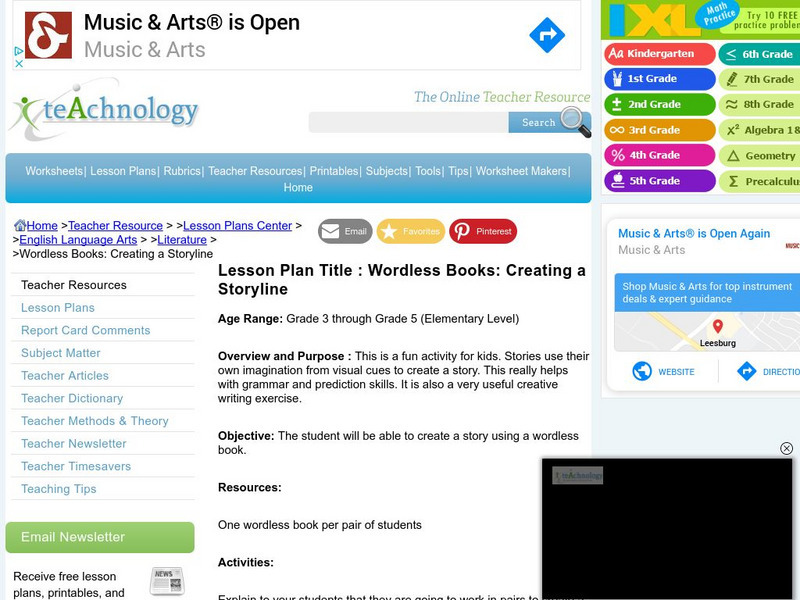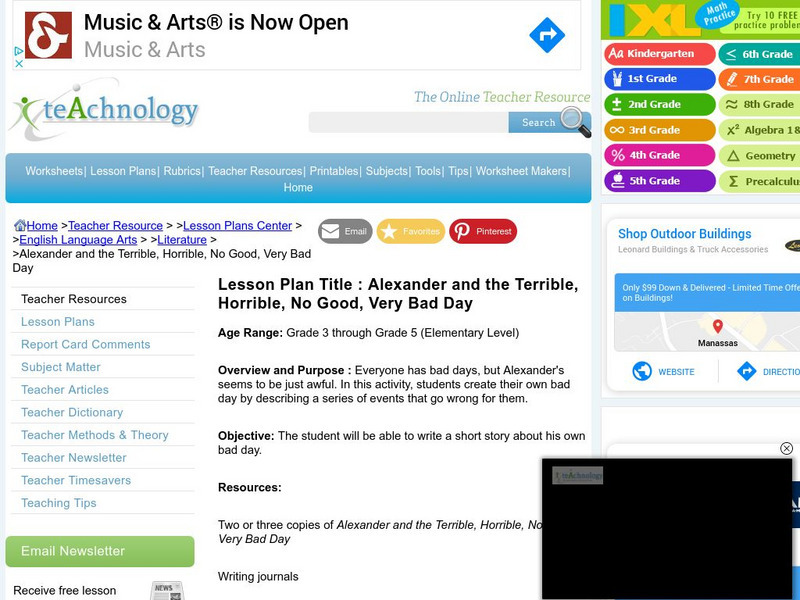Hi, what do you want to do?
Curated OER
Birkat Hamazon -1
Students explain the concept of Birkat Hamazon and the ideas contained therein. They describe the themes that they feel belong to Birkat Hamazon.
Curated OER
Indigenous People
Students examine what foods are indigenous to America and how Western European expansion impacted indigenous communities. They identify indigenous foods that they themselves eat, and label maps and identify ethnic groups in the Americas.
Curated OER
West Virginia Quarter Reverse: Over, Under, In, and Out
Students examine the images on the West Virginia quarter reverse. Using the quarter design as a model, the discover the meaning of directional terms. They play a game where they have to listen to and follow directions and complete a...
Curated OER
Child Labor - A Study Using Lewis Hine's Photos
Students use the photos of Lewis Hine to explore issues of Child Labor. They write their own pieces to describe the historical significance of Child Labor, and show the implications of Child Labor today.
Curated OER
Best Practices of Technology Integration
Students are introduced to the functions of state and local government. In groups, they research Michigan as their home state and one other state given to them and answer questions given to them in a packet. They discuss their answers...
Curated OER
Seasons' Journey : Putting it All Together
Third graders complete a diagram of the revolution of the earth around the sun and write a one paragraph explanation of the factors that cause seasons.
Curated OER
"Families and Schools of the Past"
First graders listen to and discuss historical fiction and bigraphies from the early American time period. They role-play, draw, write stories and dress up to re-create events from these historical characters.
Curated OER
Into the Spectacular Sea
Students research coral reefs as dynamic ecosystems and the part that each organism plays within that ecosystem. They create a mural of a coral reef.
Curated OER
Michigan Quarter Reverse: A Coin Out of Water
Students examine the Michigan quarter reverse and differentiate between bodies of water. On copies of the quarter reverse, they color the land green and the water blue. After observing photos of water bodies, they complete a worksheet...
Curated OER
Arsenic and Human Health
Ninth graders concentrate on arsenic poisoning as an example of the connections among health, geography, and geology as they develop a persuasive presentation about the dangers of arsenic in the drinking water, targeting a specific...
Curated OER
Music, Slavery, and the Civil War
Students explore the role of the spiritual played during the period of slavery and the Civil War. They listen to and analyze various forms of spirituals They gain an awareness of how music reflects cultures and social issues.
Curated OER
Centennial: This I Value...Hidden Treasures
Fourth graders explain the contributions of Native American Indians, explorers, and Utah's pioneers. They classify items based on value and determine what makes them valuable to individuals, groups, communities, etc.
Curated OER
Literature - Overview - May
Third graders study sayings and phrases, poetry and stories in this month's activities.
Curated OER
I'm 93, But Quitting Job Would Drive Me Off My Trolley
Students read and discuss a news article about the elderly in the workplace. They use the content of the article for practice in making predictions, determining verb tense, and basic comprehension.
Curated OER
Where in the World Clues
Students demonstrate ability to access information and classify that information as broad or specific. They create a game to share with other students.
Curated OER
Buildings Tell A Story
Fourth graders identify basic architectural features of buildings in their community and identify the changes in local buildings. They draw a sketch of a local building from memory. They compare and display student sketches.
Curated OER
Train Cinquain
Fourth graders write cinquain poems showing an understanding that people cannot outrun trains. They examine safety messages concerning tunnels, bridges and trains.
Curated OER
Studying Living Organisms
Students discover and discuss the differences between prokaryotes and eukaryotes. Using a microscope, they examine various prepared slides of prokaryotic and eukaryotic organisms.
ReadWriteThink
Read Write Think: Using Read Aloud as a Springboard to Writing
Using "Thunder Rose" by Jerdine Nolen, this lesson plan explores elements of tall tales. Included in the lesson plan is an overview, practice, objectives, resources, preparation, and more.
Teachnology
Teachnology: Lesson Plan: Wordless Books: Creating a Storyline
This lesson plan asks students grades 3-5 to use wordless picture books as a springboard to write an original story based on the pictures.
ReadWriteThink
Read Write Think: Childhood Remembrances: Lesson Plans for "Nikki Rosa"
Using Giovanni's poem as a springboard, these lessons guide students through an autobiographical writing exercise. Includes multimedia and interactive elements.
Teachnology
Teachnology: Lesson: Alexander and the Terrible, Horrible, No Good, Very Bad Day
In this lesson, students use the book Alexander and the Terrible, Horrible, No Good, Very Bad Day as a springboard for writing their own very-bad-day story.
Writing Fix
Writing Fix: Compare & Contrast as an Idea Springboard
For this Writers Workshop lesson, learners read Frog and Toad stories by Arnold Lobel to learn about writing that compares and contrasts to things. This format can be used to write about many different topics in curricular areas and...
Other
English to Go: "Animal Apps"
An article about the US and Canadian zoos using apps to teach apes is a springboard for this creative activity. Pre-reading questions, the article from Reuters, and follow-up summary in addition to grammar exercises make up a complete...




























